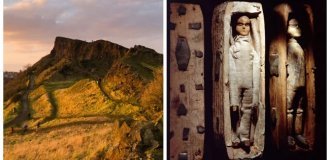The history of the sculpture, which embodied resentment and curse (8 photos)
Man has long turned the cemetery into an object of art. So heartbroken relatives are trying to cope with the emotions of the loss of a loved one. A in the case of celebrities, a recognizable unusual tombstone is already the norm. 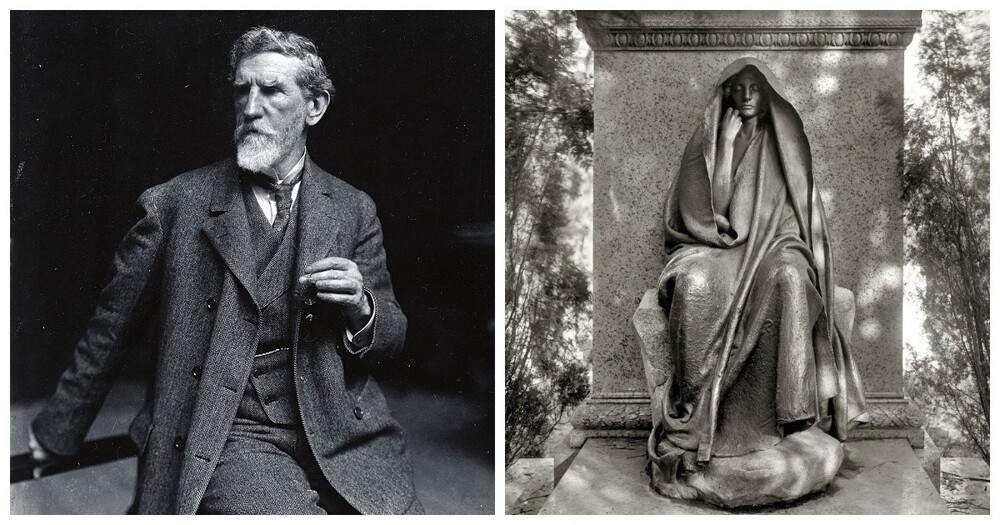
And although this gloomy sculpture, for many years standing on Cemetery "Druid Ridge" in Baltimore (Maryland), copy only, noise she managed to do much more than her original predecessor. 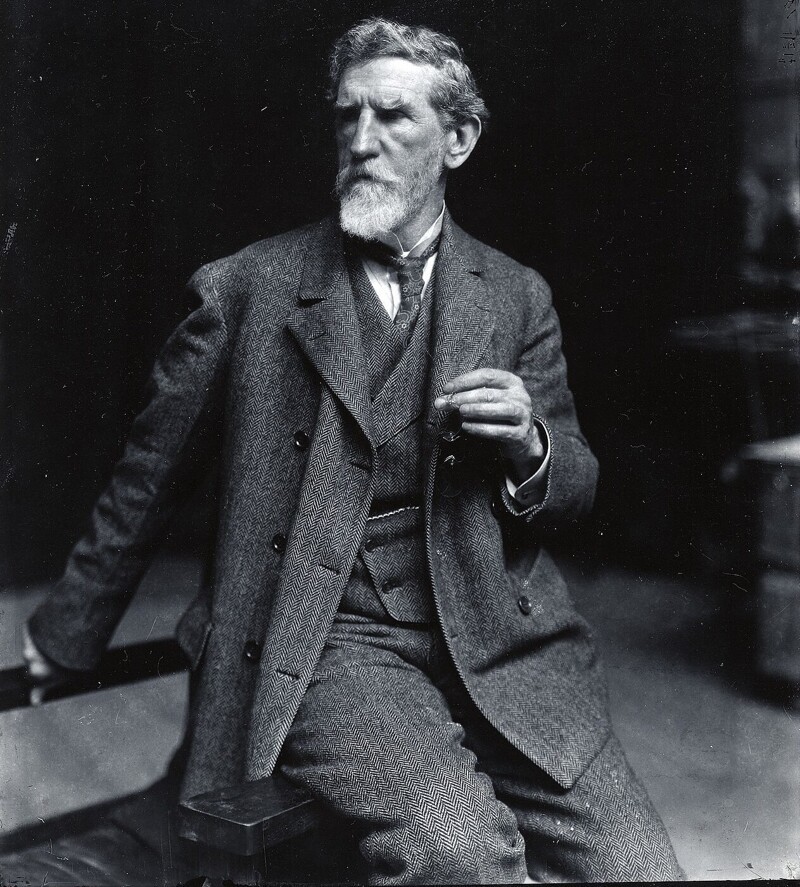
Augustus St. Gaudens
The original sculptural composition called "Sadness" made by the sculptor Saint-Gaudens. And the customer was an American writer Henry Adams, who decided with the help of a statue to perpetuate the memory of his wife. 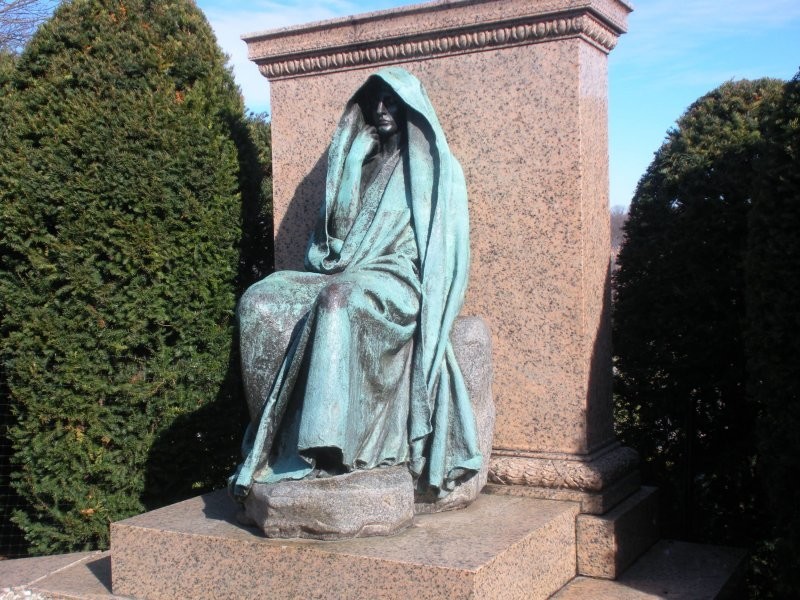
"Sorrow"
The public appreciated the work, and "Sadness" in the cemetery Rock Creek in Washington quickly became a place of pilgrimage for locals. residents. Something elusive and attractive lurked in this figure, hidden in the smooth folds of the fabric. 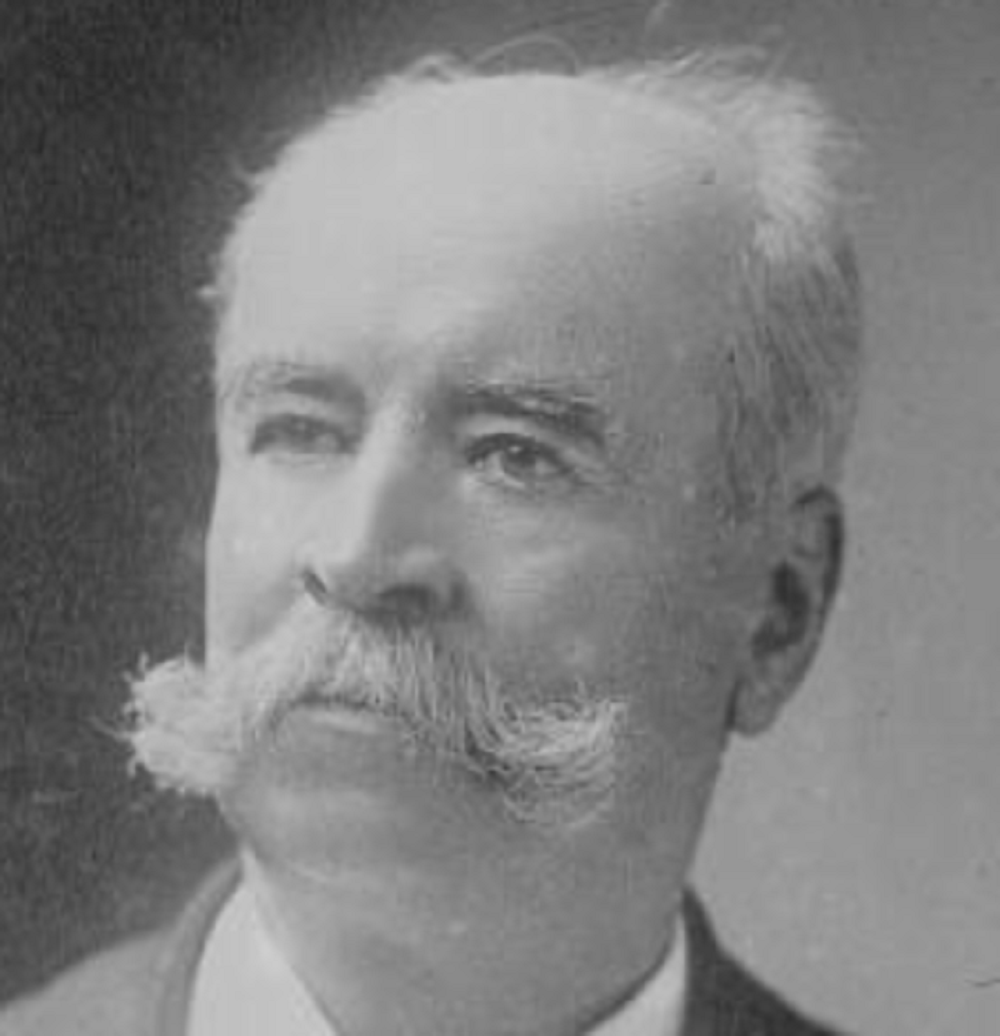
Felix Agnus
The idea impressed one general. And Felix Agnus ordered an almost exact copy to install in the family cemetery in Baltimore. The order was completed by another sculptor. Augustus Saint-Gaudens is not found the installation and did not see a copy, because shortly before that he left life.
But the widow of the deceased saw her and declared that, with the exception of minor details, this sculpture is completely copied from the work her husband. The widow tried to get the twin statue removed through the courts, but the process has been delayed. Yes, and women had a minimum of rights at that time. Then the customer himself died, and the figure was left as a tombstone on the grave of the four Agnus. 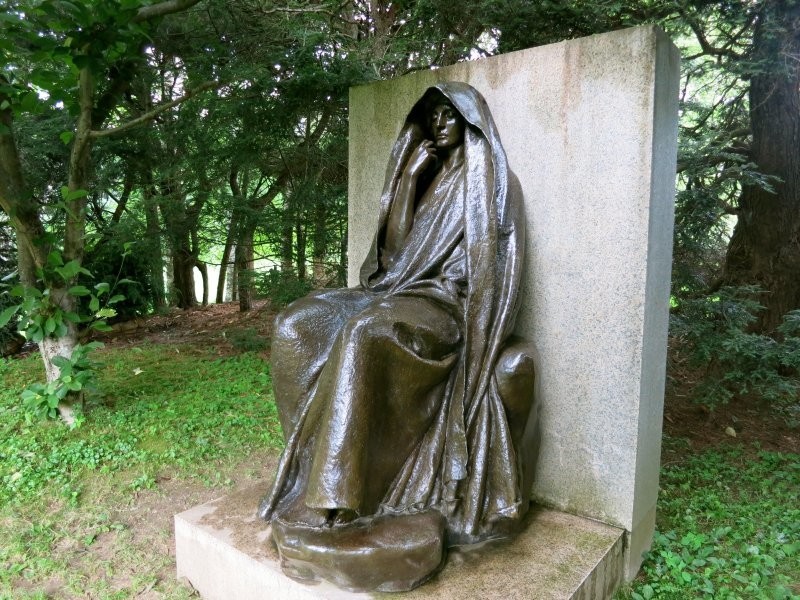
Black Aggie
Since that time, tales of a curse have crawled around the district, which, offended by the theft of her husband's intellectual property, the widow put on a copy. The people began to chat that Black Aggie, as they called creation, eyes lit up with red light.
Courageous and reckless youth who do not believe in hell, made the resting place of the Agnus family a gathering place and, in in general, desecration. Guys and girls hung out at the grave, stuck around Aggie pieces of paper, sat on their knees, put on the head of the statue headwear. And then they fell ill with strange diseases. Or happened to them accidents. 
One guy, on a bet with friends, hid and stayed on cemetery after sunset, when Druid Ridge was already closed to visits. He was found in the dead of night by the cemetery watchman, who heard heart-rending cry. The young man lay at the feet of Black Aggie, and on his face unfortunate frozen grimace of horror. There were no injuries on the body. The wrangler died of fright. But just what caused such deep horror? 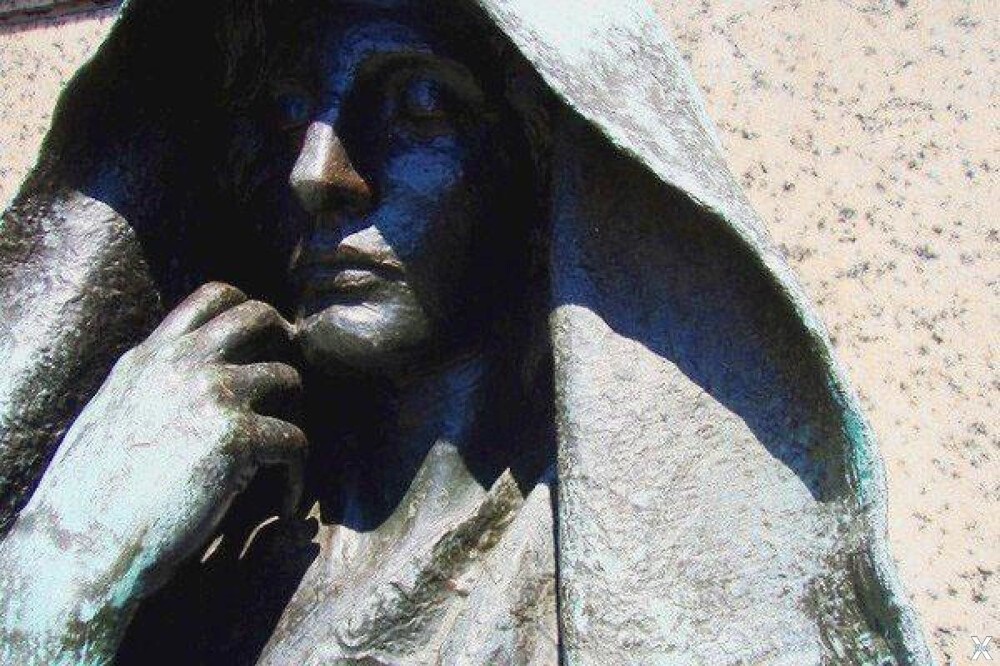
Another group of brave cynics decided to repeat an experiment to prove the stupidity of all the stories about the killer statue. One even casually put out his cigarette in Aggie's hand. And a few days later a young and healthy guy died of unknown causes. 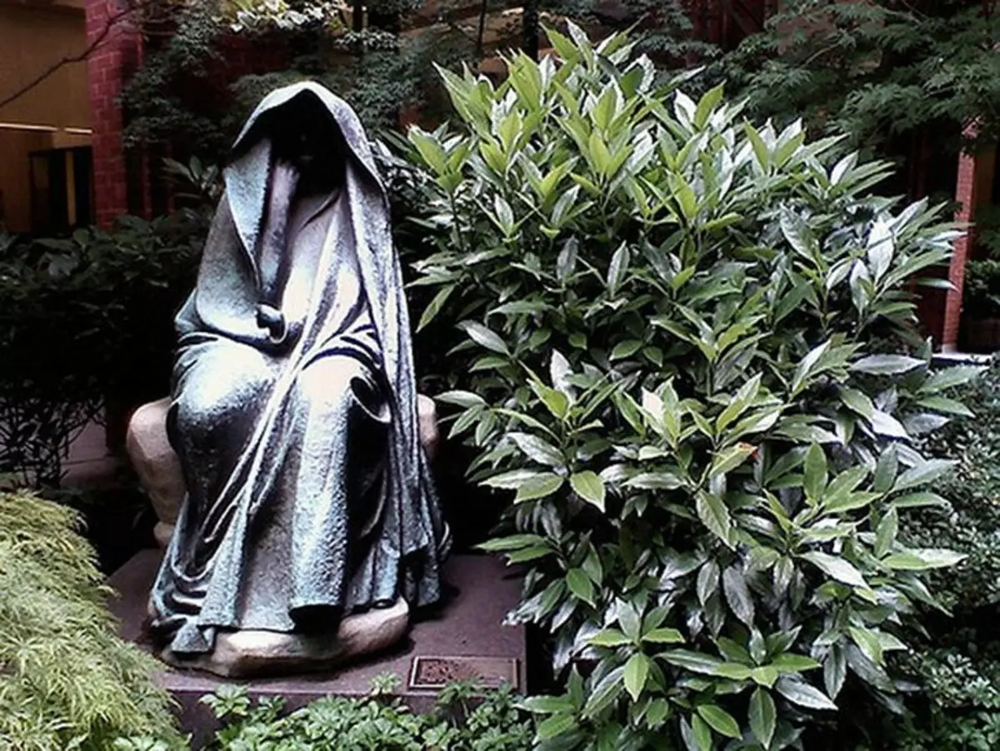
As a result, the authorities got tired of this pandemonium with a copy of "Sorrow". AND the tombstone was taken from the cemetery to the Smithsonian Institution. And then moved to the courtyard of the historical Dolly Madison mansion on the square Lafayette in Washington, where the gloomy Aggie is still wrapped in folds raincoat. Apparently, in anticipation of new bold, cynical and not very smart victims, to activate the curse.






